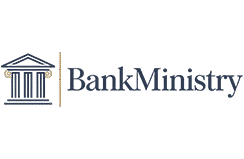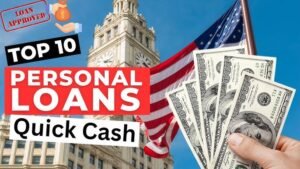Why High Yield Savings Accounts USA Matter in 2025
In an era of economic uncertainty, saving money wisely is more critical than ever. With inflation hovering at 2.4% in March 2025 (Bankrate), many Americans are seeking ways to make their savings work harder. Enter high yield savings account USA (HYSAs)—a powerful tool for growing your money safely while maintaining easy access. Unlike traditional savings accounts offering a paltry 0.38%–0.47% APY (FDIC, June 2025), HYSAs provide APYs as high as 5.00%, delivering real returns that outpace inflation.
This comprehensive guide explores the what, why, and how of HYSAs in the USA, drawing from the latest data analyzed from trusted sources like Bankrate, American Express, HSBC, Investopedia, and CNBC Select. Whether you’re building an emergency fund, saving for a down payment, or simply looking to grow your wealth, this article will equip you with the knowledge to choose the best HYSA, avoid common pitfalls, and maximize your savings in 2025.
What Are High Yield Savings Accounts?
Definition and Core Features
A high yield savings account is a deposit account offered by banks or credit unions that pays significantly higher interest rates (expressed as Annual Percentage Yield or APY) than traditional savings accounts. Typically provided by online banks or credit unions, HYSAs leverage lower operational costs to offer APYs ranging from 3.60% to 5.00% or more, compared to the national average of 0.38%–0.47% (FDIC and Bankrate, July 2025).
Key features include:
- High APYs: Rates 10–15 times higher than traditional savings accounts, maximizing returns.
- FDIC/NCUA Insurance: Protection up to $250,000 per depositor, per insured institution, ensuring safety.
- No or Low Fees: Most HYSAs have no monthly maintenance fees or minimum balance requirements.
- Liquidity: Access funds anytime without penalties, unlike Certificates of Deposit (CDs).
- Online Access: Managed via mobile apps or websites, though transfers may take 1–3 days.
How HYSAs Differ from Traditional Savings Accounts
Traditional savings accounts, offered by brick-and-mortar banks like Chase or Wells Fargo, often yield 0.01%–0.47% APY, resulting in negligible growth. For example, $10,000 at 0.47% APY earns just $47 annually, while the same amount in an HYSA at 4.40% (e.g., LendingClub) earns $440. HYSAs are typically online-only, reducing overhead costs and allowing banks to pass savings to customers through higher rates. However, they may lack physical branches and immediate ATM access, requiring planning for withdrawals.
Why Choose an HYSA in 2025?
With inflation at 2.4%, traditional savings accounts offer negative real yields (e.g., -1.93% at 0.47% APY), eroding purchasing power. HYSAs, with APYs of 4.25%–5.00%, provide positive real yields of 1.85%–2.6%, preserving and growing wealth. The Federal Reserve’s steady benchmark rate of 4.25%–4.50% (June 2025) supports these high yields, though potential rate cuts by year-end (CME Group’s FedWatch Tool) could lower APYs, making now an ideal time to lock in top rates.
The Economic Context: Why HYSAs Are Crucial Now
Inflation and Real Returns
Inflation measures the rising cost of goods and services, reducing the value of your money over time. At 2.4% (March 2025), a $10,000 savings balance loses $240 in purchasing power annually if uninvested. HYSAs counter this by offering APYs that exceed inflation, ensuring your savings grow faster than costs. For instance, Varo Bank’s 5.00% APY yields $500 on $10,000, a real return of $260 after inflation, compared to a $193 loss at the national average of 0.47%.
Federal Reserve Policy and Interest Rates
The Federal Reserve’s benchmark rate influences savings account yields. After three rate cuts in 2024 (September, November, December), the rate stabilized at 4.25%–4.50% in June 2025. HYSAs track this rate, offering high APYs while it remains elevated. However, an 80% probability of two quarter-point cuts by year-end 2025 (CME Group) suggests APYs may decline. Acting now secures higher rates before potential drops.
Online Banks vs. Traditional Banks
Online banks like Varo, LendingClub, and UFB dominate HYSAs due to lower overhead (no branches, fewer staff). This allows them to offer APYs of 4.25%–5.00% versus 0.01%–0.47% from traditional banks. However, online banks may have slower transfer times (1–3 days) and lack in-person services, a trade-off for higher returns.
Top High Yield Savings Accounts for July 2025
Based on analyzed data from Bankrate, American Express, HSBC, Investopedia, and CNBC Select, here are the top HYSAs for 2025, selected for their APYs, no/low fees, and accessibility.
1. Varo Bank Savings Account
- APY: 5.00% (3.00% base + 2.00% boost with $1,000+ monthly direct deposits and positive balance; above $5,000 earns 3.00%).
- Fees: None.
- Minimum Balance/Deposit: $0.
- FDIC Insurance: Up to $250,000.
- Features: Access to 40,000+ Allpoint ATMs (via checking), no overdraft fees, cash deposits via Green Dot (fees may apply).
- Why Choose: Highest APY (5.00%) for balances up to $5,000, ideal for new savers with direct deposits. Example: $5,000 at 5.00% earns $250/year, but $10,000 earns $400 ($250 on $5,000 at 5.00% + $150 on $5,000 at 3.00%).
2. AdelFi Credit Union High-Yield Savings Account
- APY: 5.00%.
- Fees: None.
- Minimum Balance: $100 to earn dividends.
- Minimum Opening Deposit: Not specified.
- NCUA Insurance: Up to $250,000.
- Features: Monthly dividends, online/mobile banking, requires AdelFi membership (join via Christian community or family).
- Why Choose: Full 5.00% APY on all balances (with $100 minimum), great for larger savings. Example: $10,000 earns $500/year.
3. Fitness Bank Fitness Savings Account
- APY: 5.00%.
- Fees: $10/month (waived with 12,500 daily steps or $100 average balance).
- Minimum Balance/Deposit: $100.
- FDIC Insurance: Up to $250,000.
- Features: Step tracking via Fitbit/Garmin, requires checking account with $100+ monthly deposits, online banking.
- Why Choose: Unique for active individuals; 5.00% APY on all balances. Example: $10,000 earns $500/year.
4. UFB Portfolio Savings (Axos Bank)
- APY: 4.66%.
- Fees: None, $10 for excessive transactions (>6/month).
- Minimum Balance/Deposit: None.
- FDIC Insurance: Up to $250,000.
- Features: Free ATM card, fraud protection, SSL encryption, daily compounding.
- Why Choose: High APY with ATM access, no minimums. Example: $10,000 earns $466/year.
5. LendingClub LevelUp Savings
- APY: 4.40% ($250+ monthly deposits for highest rate).
- Fees: None.
- Minimum Balance/Deposit: $0.
- FDIC Insurance: Up to $250,000.
- Features: Free ATM card, unlimited withdrawals, bill payments, daily compounding.
- Why Choose: Flexible with ATM access and no withdrawal limits. Example: $10,000 earns $440/year.
6. My Banking Direct High Yield Savings
- APY: 4.40%.
- Fees: None.
- Minimum Balance/Deposit: None.
- FDIC Insurance: Up to $250,000.
- Features: Online-only, daily compounding, no ATM/check access.
- Why Choose: Simple, high APY with no conditions. Example: $10,000 earns $440/year.
7. Western Alliance Bank High-Yield Savings
- APY: 4.25%.
- Fees: None.
- Minimum Balance: None; $1 opening deposit.
- FDIC Insurance: Up to $250,000.
- Features: Online-only, daily compounding, no ATM/check access.
- Why Choose: Competitive APY with minimal requirements. Example: $10,000 earns $425/year.
8. EverBank Performance℠ Savings
- APY: 4.30%.
- Fees: None.
- Minimum Balance/Deposit: None.
- FDIC Insurance: Up to $250,000.
- Features: Online banking, daily compounding, no ATM access.
- Why Choose: No fees/minimums, strong brand. Example: $10,000 earns $430/year.
9. American Express High Yield Savings Account
- APY: 3.60%.
- Fees: None.
- Minimum Balance/Deposit: $0 (fund within 60 days).
- FDIC Insurance: Up to $250,000.
- Features: 24/7 support, Amex app integration, daily compounding, no ATM access.
- Why Choose: Trusted brand, no fees/minimums. Example: $10,000 earns $360/year.
10. HSBC Premier Relationship Savings
- APY: Unspecified “best rate” (likely <1%, standard tiers 0.01%–0.15%).
- Fees: None with Premier status; $50/month checking fee otherwise.
- Minimum Balance/Deposit: None; requires Premier checking ($100,000 balances or $5,000 direct deposits).
- FDIC Insurance: Up to $250,000.
- Features: Global transfers, monthly compounding, 43,000+ Allpoint ATMs.
- Why Choose: For high-net-worth clients needing international banking. Example: $10,000 at 0.15% earns $15/year.
How to Choose the Best High Yield Savings Account
Step 1: Prioritize APY
The APY is the most critical factor, as it determines your earnings. Aim for 4.25%–5.00% to maximize returns. Varo, AdelFi, and Fitness Bank lead with 5.00%, but Varo caps the rate at $5,000, while AdelFi requires membership. UFB (4.66%) and LendingClub (4.40%) offer high APYs with fewer restrictions.
Example Calculation:
- $10,000 at 5.00% APY (Varo, $5,000 cap): $400/year ($250 on $5,000 at 5.00% + $150 on $5,000 at 3.00%).
- $10,000 at 4.66% APY (UFB): $466/year.
- $10,000 at 3.60% APY (Amex): $360/year.
Step 2: Evaluate Fees and Minimums
Choose accounts with no monthly fees or minimum balance requirements to avoid eroding returns. Varo, LendingClub, My Banking Direct, Western Alliance, EverBank, and Amex have no fees or minimums. Fitness Bank’s $10 fee is waivable, but HSBC’s $50 checking fee is a risk if Premier status isn’t maintained.
Step 3: Consider Accessibility
Online-only banks dominate HYSAs, offering 24/7 access via apps/websites but no branches. LendingClub and UFB provide ATM cards, enhancing liquidity. SoFi’s hybrid checking/savings offers early paycheck access and bonuses. Amex integrates with its ecosystem, while HSBC suits international transfers. If you need in-person banking, HSBC’s ~40 U.S. branches may help, though they’re limited to select states (CA, FL, NY, etc.).
Step 4: Check FDIC/NCUA Insurance
Ensure deposits are protected up to $250,000 per depositor, per institution. All listed accounts (except AdelFi, NCUA-insured) are FDIC-insured, with SoFi offering up to $3M via its Insured Deposit Program. Verify insurance when opening an account, especially with lesser-known online banks.
Step 5: Assess Additional Features
- Compounding: Daily compounding (Varo, LendingClub, UFB, Amex, EverBank) yields more than monthly compounding (HSBC, AdelFi).
- Savings Tools: SoFi’s Roundups and Vaults aid goal-based saving. HSBC offers budgeting tools and global transfers.
- Bonuses: SoFi’s $50–$300 welcome bonus requires direct deposits ($1,000–$5,000).
- Unique Requirements: Fitness Bank’s step tracking suits active savers, while AdelFi requires membership.
Practical Applications: Using HYSAs Effectively
Building an Emergency Fund
HYSAs are ideal for emergency funds (3–6 months’ expenses) due to their liquidity and high returns. For example, a $15,000 fund at 4.40% APY (LendingClub) earns $660/year, compared to $70.50 at 0.47%. How-to:
- Calculate your emergency fund needs (e.g., $2,500/month x 6 = $15,000).
- Open an HYSA like Varo or UFB (no minimums).
- Set up auto-transfers ($200–$500/month) to build the fund.
- Keep funds separate from checking to avoid spending.
Saving for Short-Term Goals
HYSAs suit goals like buying a car or funding a vacation (1–3 years). SoFi’s Vaults let you allocate funds for specific goals. Example:
- Goal: $10,000 for a car in 2 years.
- Monthly Savings: $400 at 4.66% APY (UFB) grows to $10,026 in 2 years (compounded daily).
- Action: Use auto-deposits and track progress via the bank’s app.
Maximizing Idle Cash
Park idle cash (e.g., tax refunds, bonuses) in an HYSA to earn more than a checking account (0%–0.50% APY). LendingClub’s ATM access ensures quick access. Example: A $5,000 bonus at 4.40% earns $220/year, vs. $25 at 0.50%.
Comparing HYSAs with Other Savings Options
Certificates of Deposit (CDs)
- APY: Up to 4.60% (Investopedia), fixed for terms (3 months–5 years).
- Pros: Guaranteed rate, no market risk.
- Cons: Early withdrawal penalties, less liquidity. Example: $10,000 in a 1-year CD at 4.60% earns $460, but funds are locked.
- Best for: Savers who don’t need immediate access.
Money Market Accounts (MMAs)
- APY: Up to 4.40% (CNBC, CFG Bank) or 4.32% (Bankrate).
- Pros: Check-writing, debit/ATM access, competitive APYs.
- Cons: Higher minimums (e.g., $1,000 for CFG), withdrawal limits (6/month).
- Best for: Those needing transactional flexibility.
Treasury Securities
- APY: Up to 4.85% (Investopedia, T-bills).
- Pros: Low risk, tax advantages (no state/local taxes on interest).
- Cons: Less liquid, requires purchase through TreasuryDirect or brokers.
- Best for: Risk-averse investors with long-term horizons.
Brokerage Cash Management Accounts
- APY: 4.00%+ (Investopedia).
- Pros: Flexibility, investment integration.
- Cons: Limited FDIC insurance, higher risk.
- Best for: Investors managing broader portfolios.
Safety Precautions and Common Mistakes to Avoid
Safety Precautions
- Verify FDIC/NCUA Insurance: Confirm coverage up to $250,000 per depositor, per institution. Check the bank’s FDIC/NCUA status via fdic.gov or ncua.gov.
- Secure Accounts: Use multi-factor authentication (e.g., Amex, UFB) and avoid sharing login details. Monitor accounts for unauthorized activity.
- Understand Rate Variability: HYSAs have variable APYs. Monitor rates via bank websites (e.g., varomoney.com, lendingclub.com) for changes.
- Plan for Transfer Delays: Online bank transfers take 1–3 days. Keep a small checking account buffer for urgent needs.
Common Mistakes
- Chasing APYs Blindly: Switching banks for small APY differences (e.g., 4.40% vs. 4.66%) may not justify transfer hassles. Focus on fees, access, and features.
- Ignoring Requirements: Failing to meet conditions (e.g., Varo’s $1,000 direct deposits, Fitness Bank’s steps) lowers APYs. Read terms before opening.
- Overlooking Fees: HSBC’s $50 checking fee or UFB’s $10 excessive transaction fee can erode earnings. Choose no-fee accounts like Amex or LendingClub.
- Neglecting Taxes: Interest over $10/year is taxable (Form 1099-INT). Consult a tax advisor to report earnings accurately.
Broader Context: Lifestyle and Financial Planning
Integrating HYSAs into Financial Goals
HYSAs fit into a holistic financial plan:
- Emergency Fund: 3–6 months’ expenses in a no-fee HYSA (e.g., EverBank, Varo).
- Short-Term Goals: Use SoFi’s Vaults or LendingClub’s auto-transfers for vacations, weddings, or home improvements.
- Long-Term Wealth: Pair HYSAs with CDs for fixed returns or brokerage accounts for investments (stocks, ETFs) for higher risk/reward.
Budgeting and Savings Habits
- Budgeting Tools: Use HSBC’s or SoFi’s budgeting features to track spending and allocate savings.
- Automation: Set up auto-transfers (e.g., $200/month to My Banking Direct) to build savings consistently.
- Lifestyle Fit: Fitness Bank’s step tracking aligns with active lifestyles, encouraging savings and health.
Managing Economic Uncertainty
With 80% probability of Fed rate cuts by year-end 2025, lock in high APYs now. Diversify with CDs or Treasuries for fixed returns if rates drop. Monitor inflation (2.4%) to ensure your HYSA’s real yield remains positive.
Practical Example: Comparing Returns Across Accounts
To illustrate, let’s compare a $20,000 balance over one year (daily compounding, no additional deposits):
| Bank | APY | Annual Earnings | Real Yield (after 2.4% inflation) |
| Varo Bank | 5.00%* | $800** | $320 (1.6%) |
| AdelFi Credit Union | 5.00% | $1,000 | $520 (2.6%) |
| Fitness Bank | 5.00% | $1,000 | $520 (2.6%) |
| UFB Portfolio Savings | 4.66% | $932 | $452 (2.26%) |
| LendingClub | 4.40% | $880 | $400 (2.0%) |
| My Banking Direct | 4.40% | $880 | $400 (2.0%) |
| EverBank | 4.30% | $860 | $380 (1.9%) |
| Western Alliance | 4.25% | $850 | $370 (1.85%) |
| American Express | 3.60% | $720 | $240 (1.2%) |
| HSBC Premier Savings | 0.15% | $30 | -$450 (-2.25%) |
Notes: *Varo’s 5.00% applies to $5,000; $15,000 at 3.00%. **$250 on $5,000 + $550 on $15,000.
Insights:
- AdelFi and Fitness Bank maximize earnings for larger balances.
- Varo is best for smaller balances ($5,000 or less) with direct deposits.
- UFB, LendingClub, and My Banking Direct offer high returns with flexibility.
- Amex suits brand-loyal savers but yields less.
- HSBC is unsuitable for yield-focused savers.
How to Open and Manage an HYSA
Step-by-Step Guide to Opening an HYSA
- Research: Compare APYs, fees, and features using trusted sources (e.g., Investopedia, CNBC Select).
- Choose a Bank: Select based on your needs (e.g., Varo for high APY, LendingClub for ATM access).
- Apply Online: Visit the bank’s website (e.g., varomoney.com, amex.com). Provide personal details (name, SSN, address).
- Fund the Account: Link an external account for ACH transfers (1–3 days) or mail a check (e.g., Amex, HSBC). Some banks (Varo, HSBC) allow cash deposits via retailers/ATMs.
- Verify: Confirm test deposits (2–3 days) to link accounts securely.
- Set Up Auto-Transfers: Schedule monthly deposits to meet requirements (e.g., Varo’s $1,000, LendingClub’s $250).
Managing Your HYSA
- Monitor Rates: Check bank websites monthly for APY changes (e.g., Amex dropped from 4.30% to 3.60% in 2024–2025).
- Track Interest: Review monthly statements for interest credits (daily compounding maximizes earnings).
- Use Tools: Leverage SoFi’s Vaults or HSBC’s budgeting features to organize savings goals.
- Plan Withdrawals: Allow 1–3 days for transfers to checking accounts. Use LendingClub or UFB’s ATM cards for faster access.
Tax Implications
Interest earned over $10/year is taxable as ordinary income (reported via Form 1099-INT). For example, $500 from a 5.00% APY on $10,000 may add to your taxable income, potentially increasing your tax bracket. Consult a tax advisor to plan for obligations and deductions.
Advanced Strategies for Maximizing HYSA Returns
Laddering HYSAs with CDs
Combine HYSAs with CD ladders for flexibility and fixed returns:
- Allocate 50% to an HYSA (e.g., UFB at 4.66%) for liquidity.
- Split 50% across CDs (e.g., 1-year at 4.60%, 3-year at 4.00%).
- Reinvest maturing CDs into HYSAs if rates drop, ensuring high yields.
Pairing with Budgeting Apps
Use apps like YNAB or Mint alongside SoFi or HSBC’s tools to track spending and funnel surplus funds into your HYSA. Example: Redirect $200/month from dining out to LendingClub, earning $88/year at 4.40%.
Monitoring Rate Changes
With Fed rate cuts looming, check bankrate.com, investopedia.com, or bank websites weekly. If APYs drop (e.g., from 5.00% to 4.50%), consider switching to a higher-yield account (e.g., AdelFi to Newtek Bank, if 5.25% persists).
Addressing Common Concerns
Are HYSAs Safe?
Yes, HYSAs are safe with FDIC/NCUA insurance up to $250,000. Online banks like Varo and UFB use SSL encryption and multi-factor authentication to protect accounts. Verify insurance via fdic.gov or ncua.gov and avoid sharing login credentials.
Will Rates Stay High?
Current APYs (4.25%–5.00%) are supported by the Fed’s 4.25%–4.50% rate, but cuts projected for late 2025 could lower rates. Lock in high APYs now and diversify with CDs for fixed returns.
How Do I Access Funds?
Most HYSAs allow ACH transfers (1–3 days) to linked accounts. LendingClub, UFB, and SoFi offer ATM cards, while Varo provides ATM access via checking. Plan withdrawals to avoid delays.
Read more related blogs – best savings account USA 2025
Frequently Asked Questions
What is the best high yield savings account in the USA for 2025?
The best HYSA depends on your needs. Varo Bank, AdelFi, and Fitness Bank offer the highest APY (5.00%), ideal for maximum returns. LendingClub (4.40%) and UFB (4.66%) provide ATM access and no minimums, while American Express (3.60%) suits brand-loyal savers.
Are high yield savings accounts safe?
Yes, HYSAs are safe with FDIC/NCUA insurance up to $250,000 per depositor. Choose reputable banks (e.g., Varo, EverBank) and use secure login practices to protect your funds.
How much can I earn with an HYSA?
Earnings depend on the APY and balance. For $10,000:
5.00% APY (AdelFi): $500/year.
4.40% APY (LendingClub): $440/year.
3.60% APY (Amex): $360/year.
Daily compounding maximizes returns.
Can I lose money in an HYSA?
You cannot lose principal in an HYSA if within FDIC/NCUA limits ($250,000). However, inflation (2.4%) may outpace low APYs (e.g., HSBC’s 0.15%), reducing purchasing power. Choose high-APY accounts to stay ahead.
Disclaimer: This content is for informational purposes only. Always consult a qualified financial professional for advice and decisions regarding banking and investments.




